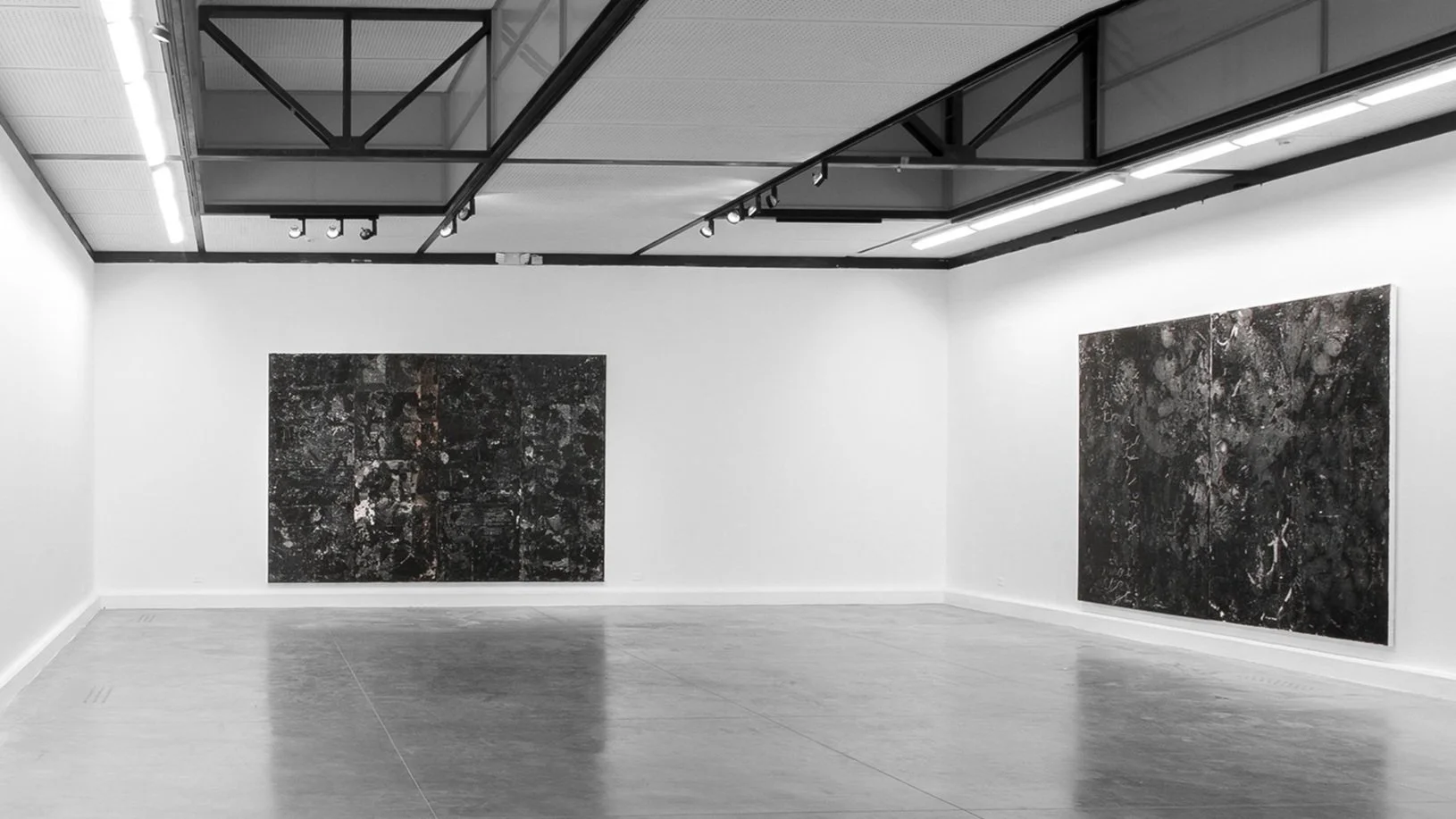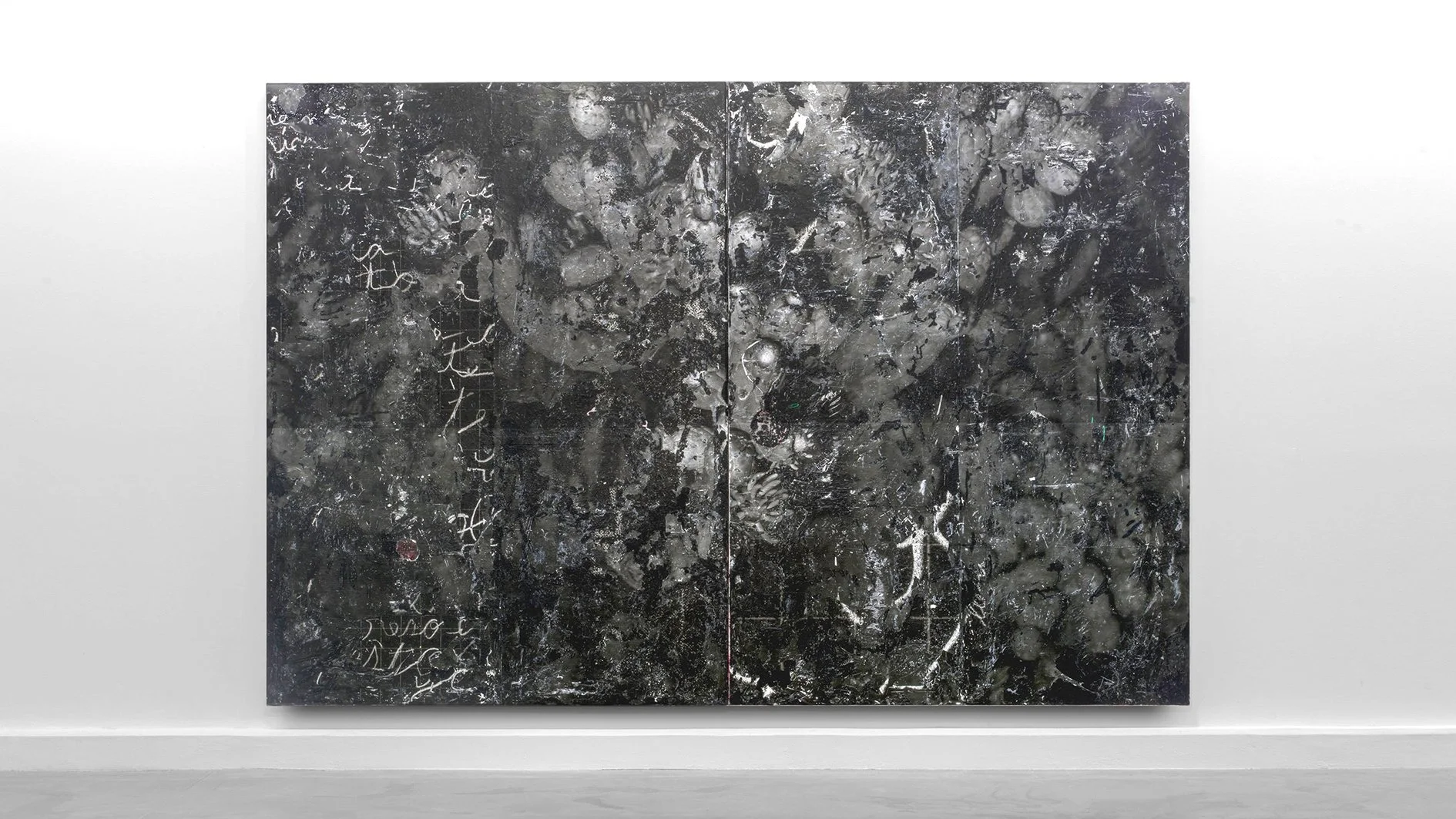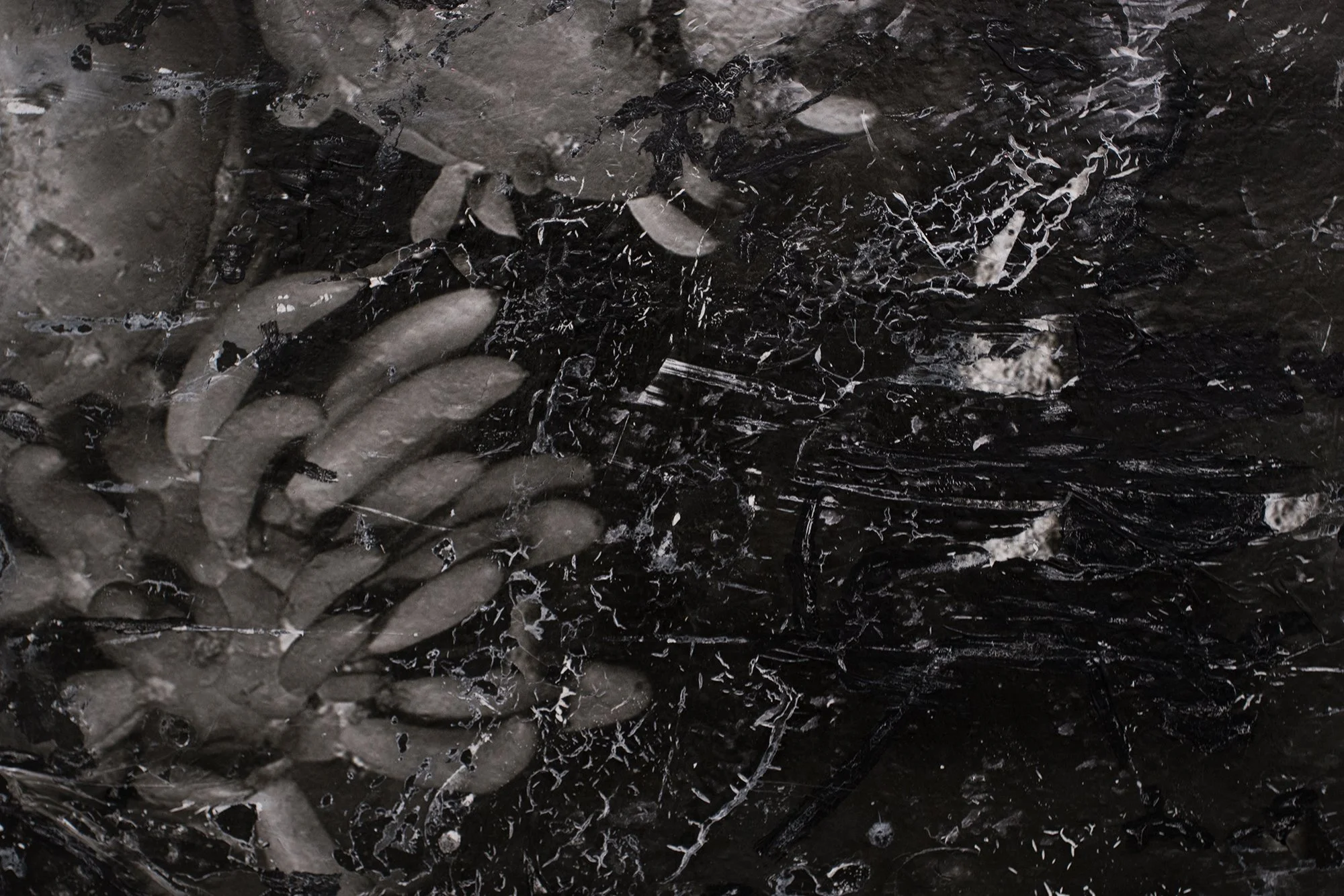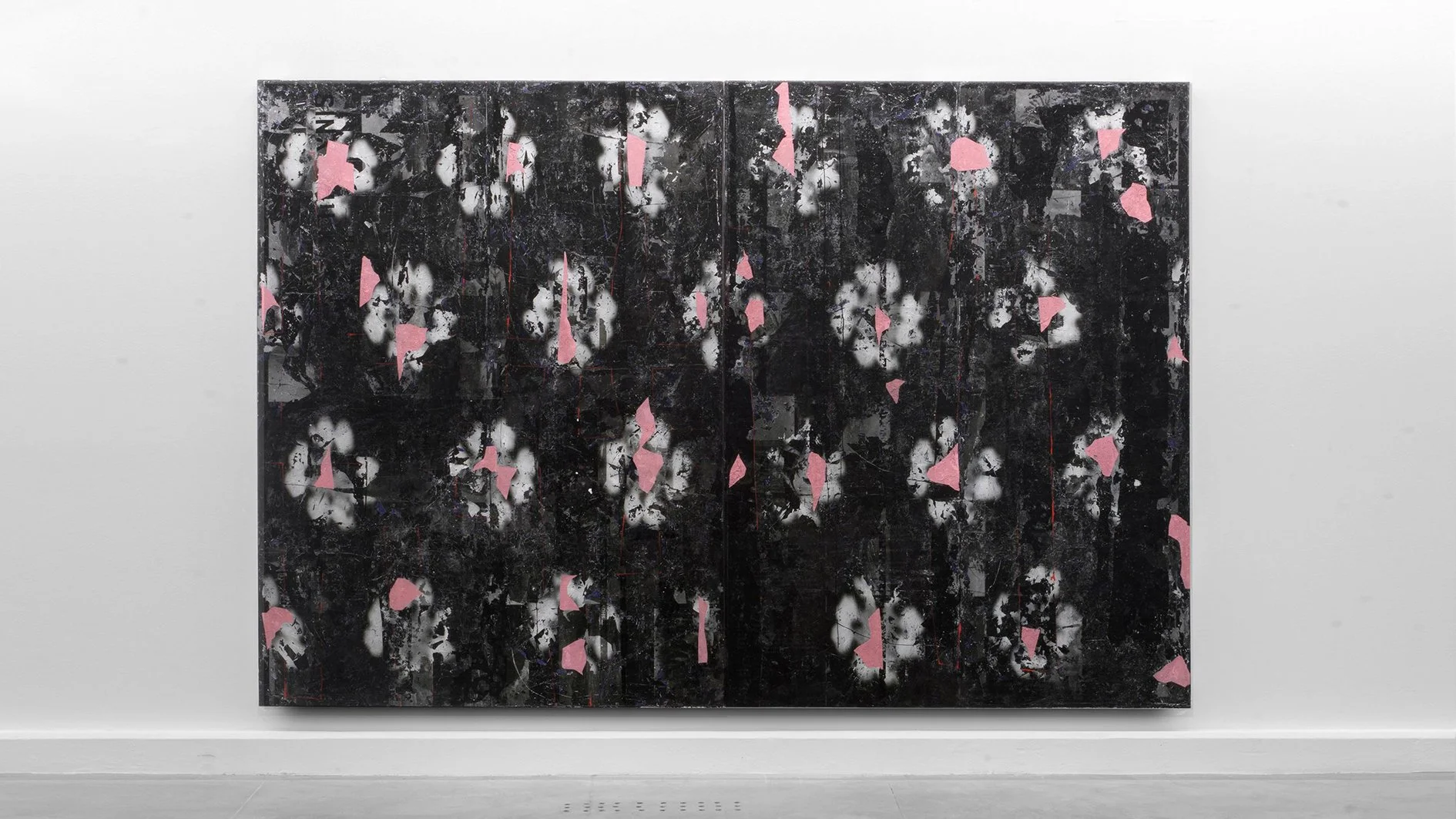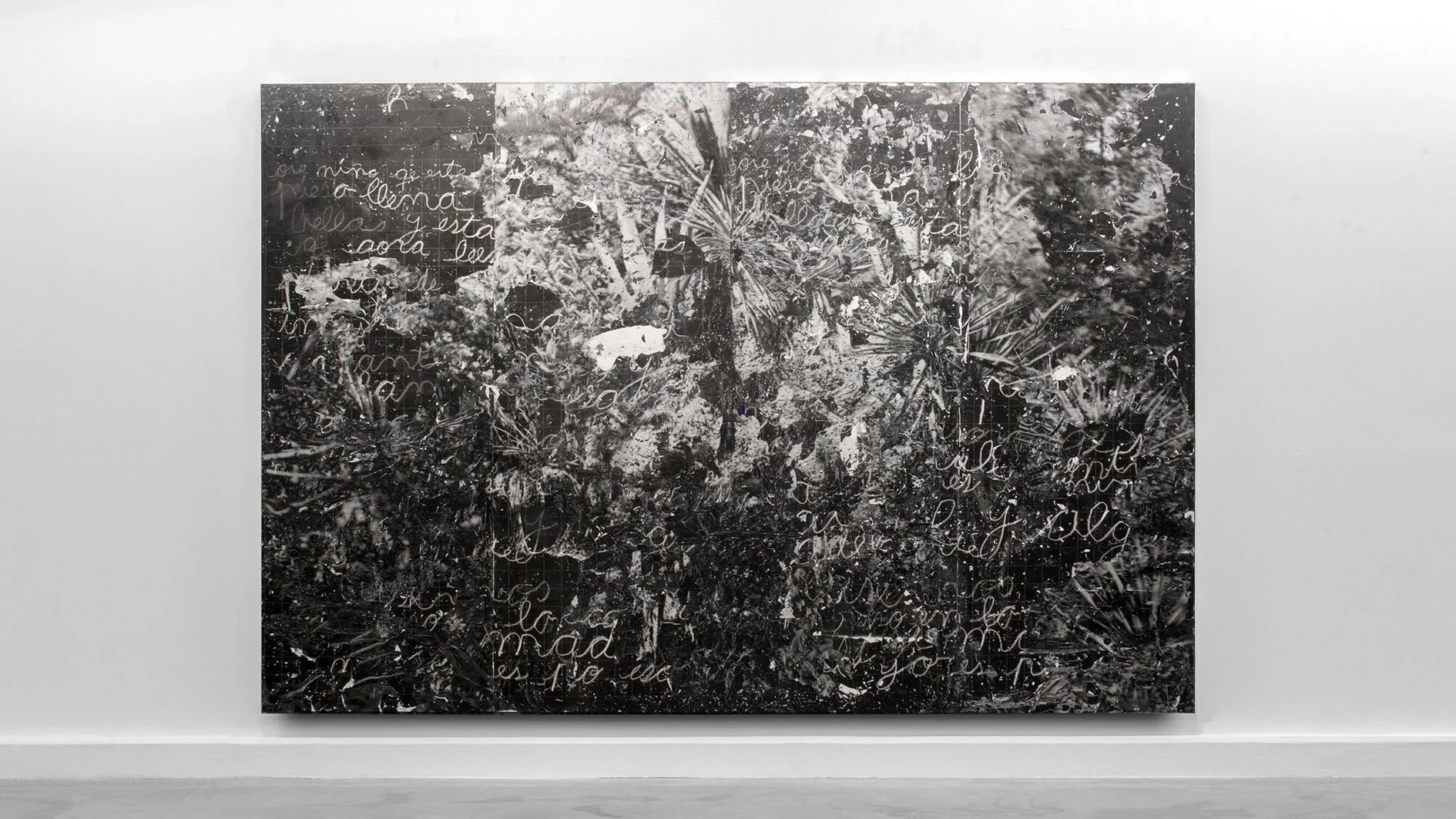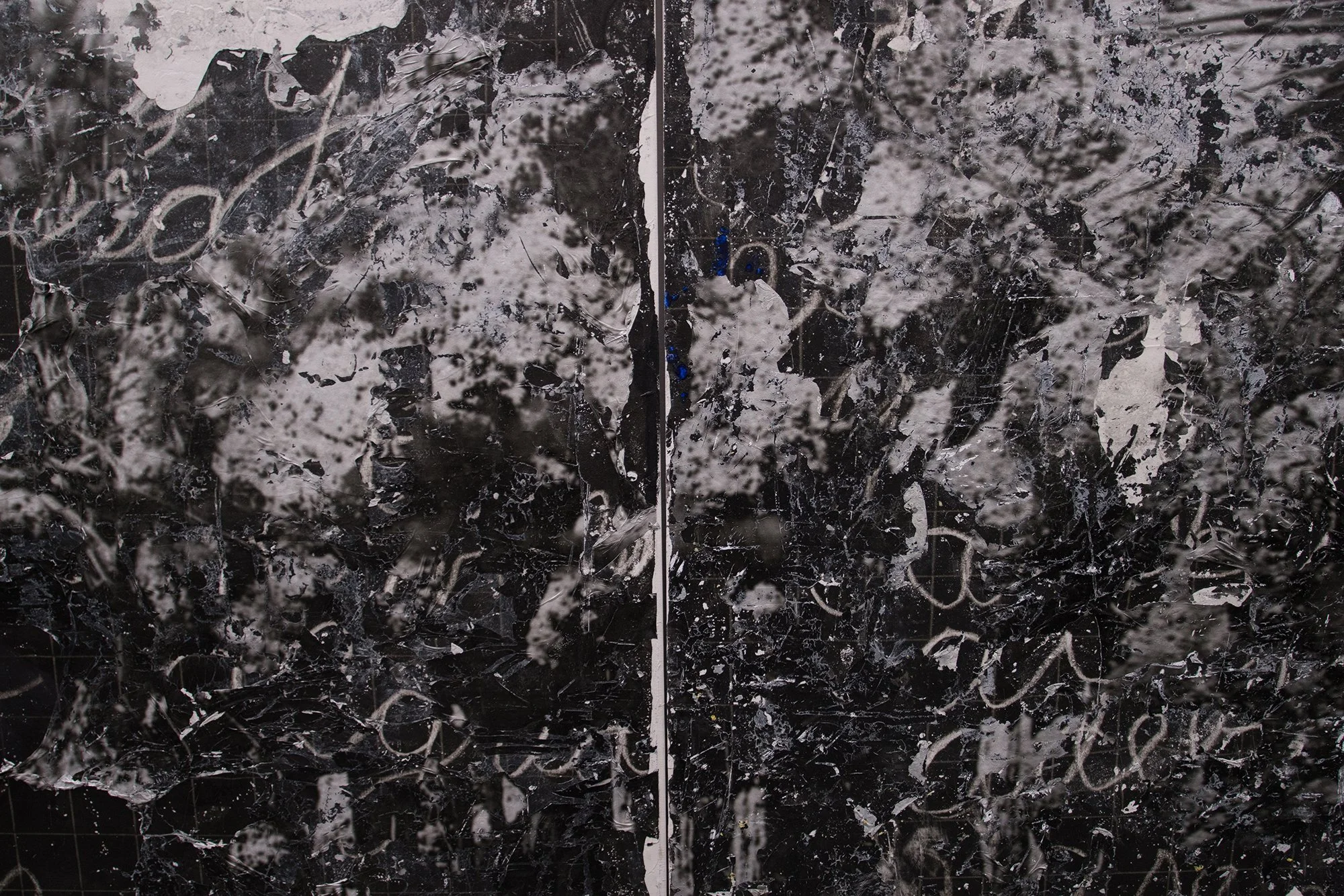Misfit (Primary Schools)
2017¡
Pigment ink, acrylic resins and acrylic paint on pure linen.
260 x 390 cm.
MUSEO DE ARTE CONTEMPORÁNEO DE LIMA
08.08 - 22.10, 2017
Through the use of conceptual ambiguity and a combination of pictorial means, Nicolas Franco address in First Letters the tragic figure of the Jorge Valenzuela the "Jackal of Nahueltoro". Valenzuela was a illiterate peasant who went down in history for brutally murdering his wife and five children in the town of Nahueltoro in southern Chile. After being imprisoned he lived a kind of transformation where he learned to read and write before being executed.
Primeras Letras,
Exhibition views LIMAC - Museo de Arte Contemporáneo de Lima, 2017
Two letters, written by Valenzuela during his confinement in the prison of Chillan, compose the epicentre of the installation. One, addressed to the then president Jorge Alessandri and the other, written one day before its execution, to its mother. Unimaginable: his poetic prose, although full of spelling mistakes and on a sheet of primary school notebook, reflects those residues of good and desires of redemption that every human being keeps. In the installation at MAC Lima, these two documents interact with a series of anonymous photographs gathered from the collection of the National Historical Museum of Chile; institution that labels them under the generic category of "Non-urban regional views". A label as wide as a common grave.
These two historical bodies function as antecedents to pose a a sort of critical re-composition of the original materiality of photography. Neither purely analogical nor digital, this re-composition, filtered through the photographic film, takes place on the alternative terrain of painting. Specifically inside the large-scale canvas, a projection of the historical frame, made modern in its most evident field of exploration for the eye and for the gaze.
In First Letters fragmented body of Valenzuelas hand writing and the lost body of the image obtained through the work with light, reference each other in terms of identity, functioning as problematic areas in abstract compositions, eroded by incomplete texts or ruined “fields of color”. . Calligraphy and landscape emerge from between the cracks and scars of the painting as authentic visual events. They do so like the shadow of a visual experience lodged, like a caress or a slap, not in the conscious memory of the contemporary eye but in its skin.
